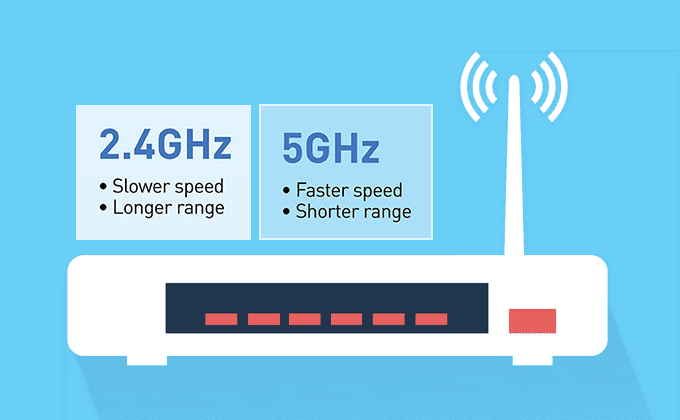

May get interference from other devices running on the same band (i.e.Can be crowded because of so many users (may affect speed).Here are a few facts about each frequency: The number of channels that are available to you depends on the regulatory domain for your location. The 5.8 GHz band tends to be less crowded than the 2.4 GHz band because fewer devices use it and because it has 23 channels for devices to use, while the 2.4 GHz band has only 11 channels available. When multiple devices or access points attempt to use the same radio space, overcrowding occurs. The 5.8 GHz frequency, which is a newer standard, is not commonly used in these devices so, dual-band routers are less likely to see interference, from common household devices and access points, on the 5.8 GHz frequency. Most devices in your home, including cordless telephones, Bluetooth devices, garage door openers and even baby monitors, run on the 2.4 GHz frequency. That’s a pretty big difference in wireless speed. The 5.8 GHz radio can support up to 1300 Mbps. The 2.4 GHz radio runs on a lower frequency between 450 Mbps or 600 Mbps. When someone refers to a device as being dual-band, the term indicates that the device has the capability of broadcasting both a 2.4 GHz and 5.8 GHz frequency.


What is the difference between 2.4 GHz and 5.8 GHz WiFi? Today, we will be discussing the differences between the two wireless frequencies and when to use them.


 0 kommentar(er)
0 kommentar(er)
